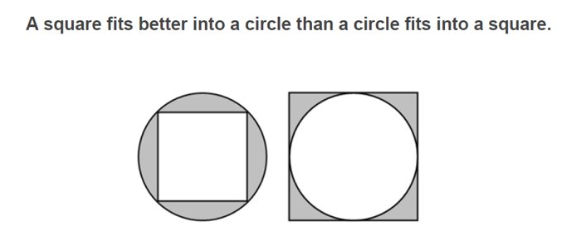Problem Solving CPD Session - By Michael Ellis
 The first problem facing any Maths scholar approaching the 22nd February was how to get to York for our CPD session. Storm Ciara and Denis swelled Britain’s rivers to record levels. With the falling of the flood waters, still lapping high into York’s parklands, comes talk of the problem of our generation, climate change. The problem that the generation we teach will shoulder much of the burden of finding a solution to.
The first problem facing any Maths scholar approaching the 22nd February was how to get to York for our CPD session. Storm Ciara and Denis swelled Britain’s rivers to record levels. With the falling of the flood waters, still lapping high into York’s parklands, comes talk of the problem of our generation, climate change. The problem that the generation we teach will shoulder much of the burden of finding a solution to.
At the National STEM Centre in York our session was led by Michael Anderson an employee of the centre and teacher with 15 years-experience who asked us the following questions. 1) What is a problem? 2) What is problem solving and what skills does it require? 3) How do you teach problem solving skills?
1) We defined a problem as anything that’s answer is not trivial or a lack of information. Problem Solving was neatly wrapped by Guy Claxton’s quote, “Is knowing what to do when you don’t know what to do.”
2) In answer to what problem-solving skills are we strongly stated that while method, order, and visualisation were important resilience was the most important thing. Resilience is such a hard skill to teach for teenagers are not the most naturally resilient. A key to building resilience is the use of scaffolding, we discussed when we would use it, when we wouldn’t use it but most importantly how we can use it to help all students engage in problem solving. We reviewed a problem involving a ski slope that had been scaffolded in several different ways to make what seemed to be very different problems in both nature and complexity.
3) The answer to how we teach problem solving skills is by creating a classroom culture where students in our classes are prepared to explore ideas, to think carefully about their mathematical reasoning and share those thoughts with others. It is ultimately through learning problem solving skills such as these that our students can apply in later life to solve potentially far greater and generation solving problems.
As a mathematician there were a couple of problems that I was excited about and am seeking the soonest opportunity to squeeze into a lesson. Particularly the following problem.

The problem gets students to engage with what they know about circles, squares, triangles. They can use a variety of methods potentially requiring fractions, ratios, and surds. The problem has an answer that is interesting and non-obvious which helps by sparking discussion. There are easy ways to scaffold it too giving different students different radii. Loads more resources like it can be found here which is the national STEM learning centres inquiry maths website. It is well worth a look!
By Michael Ellis
Images provided by author
------
Keep up-to-date with the latest Maths Scholarships news:
Find us on Twitter, Instagram, LinkedIn, YouTube, and Facebook.